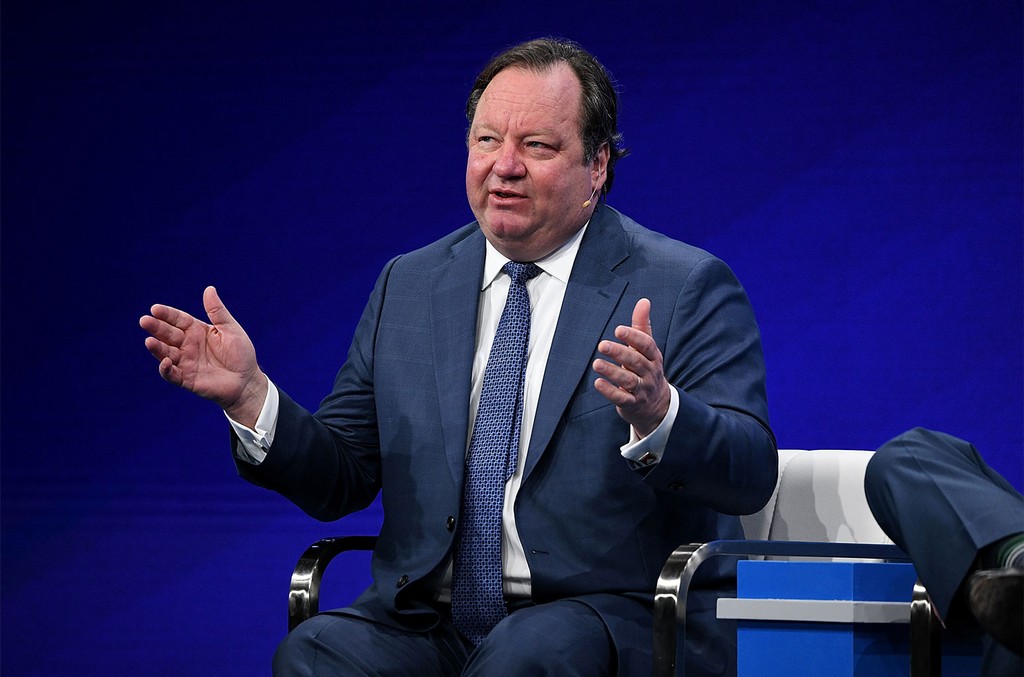ViacomCBS on Thursday reported lower but better-than-expected second-quarter earnings and a 27 percent drop in advertising revenue for the first full three-month period affected by the novel coronavirus pandemic.
The company’s film unit profit rose compared with the year-ago period though.
In its third financial update since the recombination of Viacom and CBS Corp. in December, the company exceeded Wall Street forecasts for various financial metrics, reported an increase in streaming subscribers and raised its synergy target for the merger that created it.
ViacomCBS, led by CEO Bob Bakish, had previously said that the biggest advertising hit was expected in the second quarter, while ratings and streaming momentum had been stronger early in the virus crisis. Bakish said in June that the TV advertising climate has improved since hitting a bottom in April.
In the company’s TV Entertainment arm, which includes the CBS network, revenue declined 22 percent, “primarily driven by the impact of COVID-19 on the advertising market and lower content licensing revenue.” Advertising dropped 27 percent, while affiliate revenue rose 22 percent, “fueled by growth in station affiliation fees and retransmission revenue, as well as strong subscription streaming revenue.” Adjusted operating income before depreciation and amortization (OIBDA) decreased 36 percent, “mainly as a result of the revenue decline, partially offset by lower production and programming costs from COVID-related production delays and the mix of primetime programming.” Advertising and promotion costs were also lower due to “the broadcast of fewer original programs due to COVID-19.”
The timing of the pandemic meant a particular hit for the Paramount studio unit’s box office as several high-profile releases had to delay or cancel their theatrical debuts, leaving revenue down from the year-ago period. But profitability rose, helped by lower production costs due to the pandemic and the home entertainment revenue for the early digital release of Sonic the Hedgehog from March 31, or 46 days after its initial launch in theaters.
The firm said adjusted operating income before depreciation and amortization in the film unit increased 22 percent, “reflecting lower distribution costs resulting from the absence of theatrical releases in the quarter, as well as the strong performance of Sonic the Hedgehog in the home entertainment market.” The gain came despite a drop of 26 percent in revenue “as a result of the closure of movie theaters throughout the quarter, as well as the timing of licensing revenues.”
Theatrical revenue was “immaterial” in the quarter, the firm said.
Cable networks unit revenue increased 2 percent on “growth from the licensing of domestic streaming rights to South Park, partially offset by weakness in the advertising market as a result of COVID-19, as well as lower affiliate revenue.” Ad revenue here fell 26 percent. Adjusted OIBDA grew 30 percent on “lower programming costs, primarily due to scheduling changes and the cancellation of events as a result of COVID-19, lower advertising and promotion costs resulting from the broadcast of fewer original programs during the quarter and the increase in revenues.”
Domestic streaming and digital video revenue grew 25 percent over the same period last year, while domestic paid streaming subscribers reached the 16.2 million mark after ending the first quarter above 13.5 million. ViacomCBS said its CBS All Access streaming service saw paid subscribers, streams and minutes watched reach all-time highs in the second quarter. “Showtime OTT delivered its best quarter ever in sign-ups, streams and minutes watched, driven by original programming, including Homeland, Billions and The Chi,” it added.
Free streaming service Pluto TV’s domestic monthly active users (MAUs) grew to 26.5 percent, up 61 percent from the year-ago period. “Despite the impact of COVID-19, Pluto TV continued to deliver robust advertising revenue growth in the quarter,” the firm said. Pluto TV’s total international MAUs reached 6.5 million, with its total global MAUs hitting 33 million.
ViacomCBS has since the recombination rejigged operations and executive teams. Bakish has said that the pandemic also brought the potential for cost reductions beyond the $750 million in targeted Viacom-CBS merger synergies, with the firm looking for “continued cost and operating opportunities that will create both immediate and lasting benefits.” Informed by “how we had to rethink our operations,” which has “proven we can do more with less and can operate without being physically co-located,” he said ViacomCBS was “exploring opportunities to further consolidate facilities, migrate more activities to lower-cost locations and increase sharing of capabilities.”
On Thursday, ViacomCBS raised its synergy target to “$300 million in merger-related cost synergies in 2020, up from $250 million,” and its three-year run-rate cost savings target to $800 million from $750 million.
Second-quarter net earnings from continuing operations fell 51 percent to $478 million on a 12 percent revenue drop to $6.28 billion. But adjusted operating income before depreciation and amortization (OIBDA) rose 8 percent. The company said the results marked the “second consecutive quarter of sequential improvement” such key metrics as adjusted OIBDA.
“ViacomCBS delivered another solid quarter, with clear operational momentum and sequential improvement in key earnings and cash flow metrics,” said Bakish. “Despite the impact of COVID-19 on revenue in the quarter, we’re successfully managing through the effects of the pandemic, reaffirming the strength of our combined operations. Our results underscored our strong progress delivering on our value-creation initiatives, including integration cost synergies, expanded and new distribution agreements, as well as the rapid acceleration of our streaming business, where we achieved record users and revenue in free and pay while building toward the relaunch of our diversified super service.”
ViacomCBS shares rose more than 5 percent in pre-market trading.
This article was originally published by The Hollywood Reporter.



